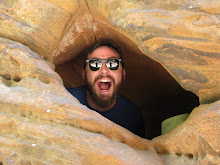

This map illustrates census data by county, while representing the spread of people who chose their race as Asian on the 2000 census, throughout the United States of America. This map illustrates a population distribution of Asian in percent per county within the United States. The map indicates a concentration of Asians on the coasts and with a somewhat surprising concentration through the "Bible Belt". A significant observation can also be found in the intervals of the legend. The percentages of concentration never reach above 20% in any given county. Though trends of concentration clearly exist, the concentrations on this map do not point to a specific area where the population seems to principally live. It is important to observe the tricks that the differing county sizes in the west coast from the east coast can play in deceiving the data. Viewers of this map may attempt to read overall population size out of this map which would be blurred greatly by not knowing the actual population of each county. This only represents percent of Asians per county in relation to overall county population.

This map also illustrates census data by county, while representing the spread of people who chose their race as Black on the 2000 census, distributed across the United States of America. As with the previous map, this map also shows the percent of Blacks per county. There is an obvious concentration of Blacks in the south and southeastern portion of the country. This concentration is quite high and worth noting in terms of the data intervals. The category with the highest percentage can reach as high as 87%. This is a significant difference when compared with the other two maps. Given the consistently high levels of concentration in the south one could almost surmise that one of those counties could hold a larger than 50% majority. If someone was so inclined to look further into this question they would be able to change the breaks to indicate it but given the rest of the US counties somewhat meager percentages, it would be easy to lose the significance of those counties with smaller representation.

This map once again illustrates census data by county, while representing the spread of people who chose their race as "Some other race" on the 2000 census, across the United States of America. The map shows the percentage of "Some other race" per county. "Some other race" is considered to be a "non-standard" category in respect with the other race categories on the census. This category is used to catch all other races that are not included within the other race categories such as many mixed racial backgrounds as well as nontraditional races. Given the intention of this category, "Some other race" is consistently considered to be dominated by people of Hispanic or Latino descent (according to the American Census Bureau). With this in mind, the mapped percentages of these populations make more sense in terms of the most concentrated locations, being that historically these are the regions with the highest representation of Hispanic and Latino races. Yet, the idea of this category holding many racial groups should always be considered when looking at "Some other race" maps.
My overall experience with the census mapping series has been eye-opening. The attention to detail that is necessary in order to properly present the information from the census requires a broad knowledge. It is important to understand the intentions behind the census itself as well as the methods through which they have chosen to carry out those intentions. Through this knowledge of the census, the GIS map creator can better represent the data at hand. This process has many pitfalls in terms of data acquisition, data manipulation (joining tables), and representation through the various types of data classification. Greater knowledge of these areas greatly benefits the quality of the map created through census data.
My GIS experience through this class has shown me the great potential that GIS has to offer. By gaining the foundational knowledge of working with GIS, I have been able to better orient myself in the realm of creating and viewing maps. This experience gained has shown me what a powerful tool GIS can be in trying to answer any geographically based questions. Though there is quite a steep learning curve associated with the use of GIS, this fact only proves the vast potential of the software and of the individual wielding it. Census data lends itself to the use of GIS as a software that can unearth important statistical characteristics of our population.














